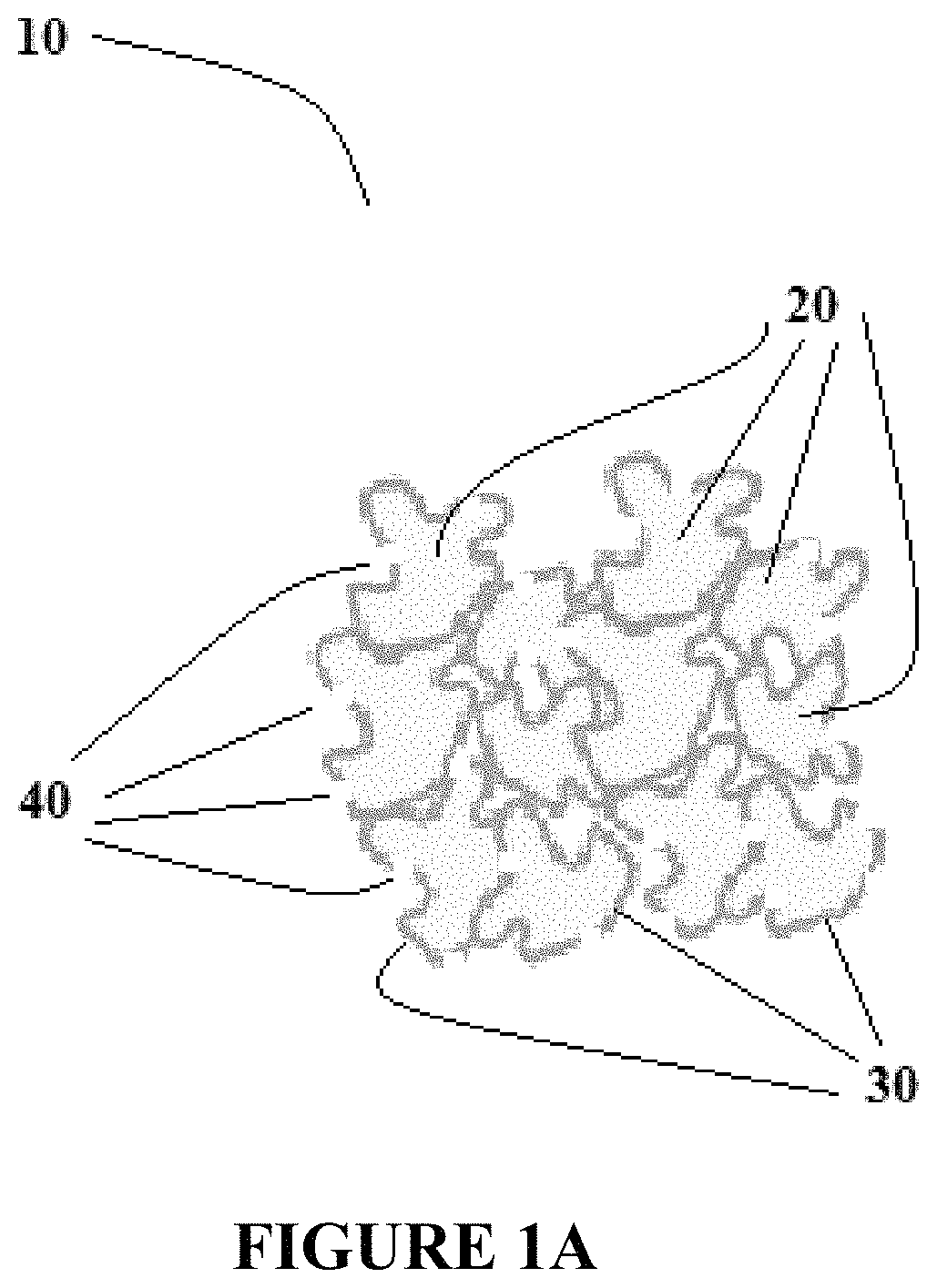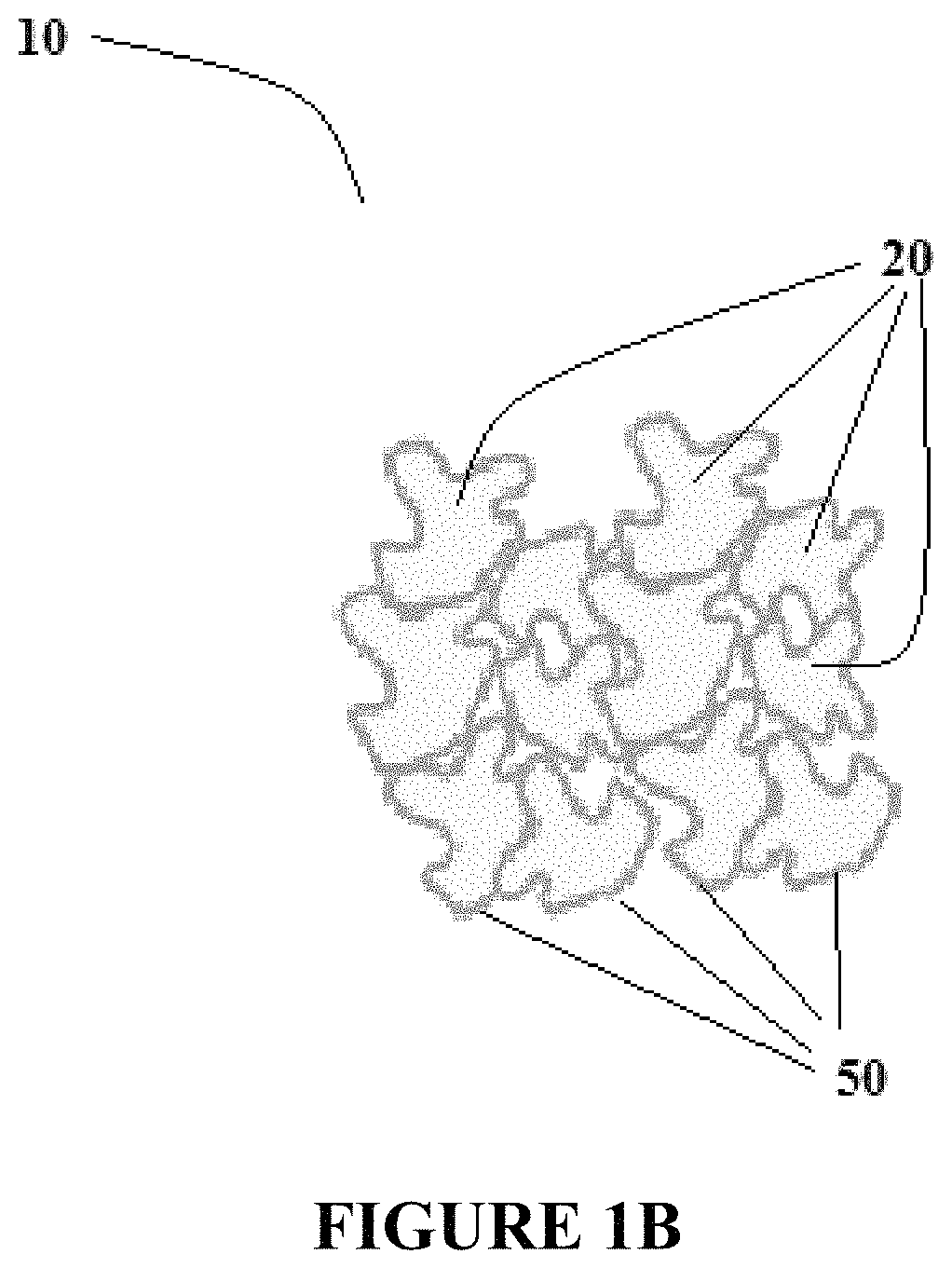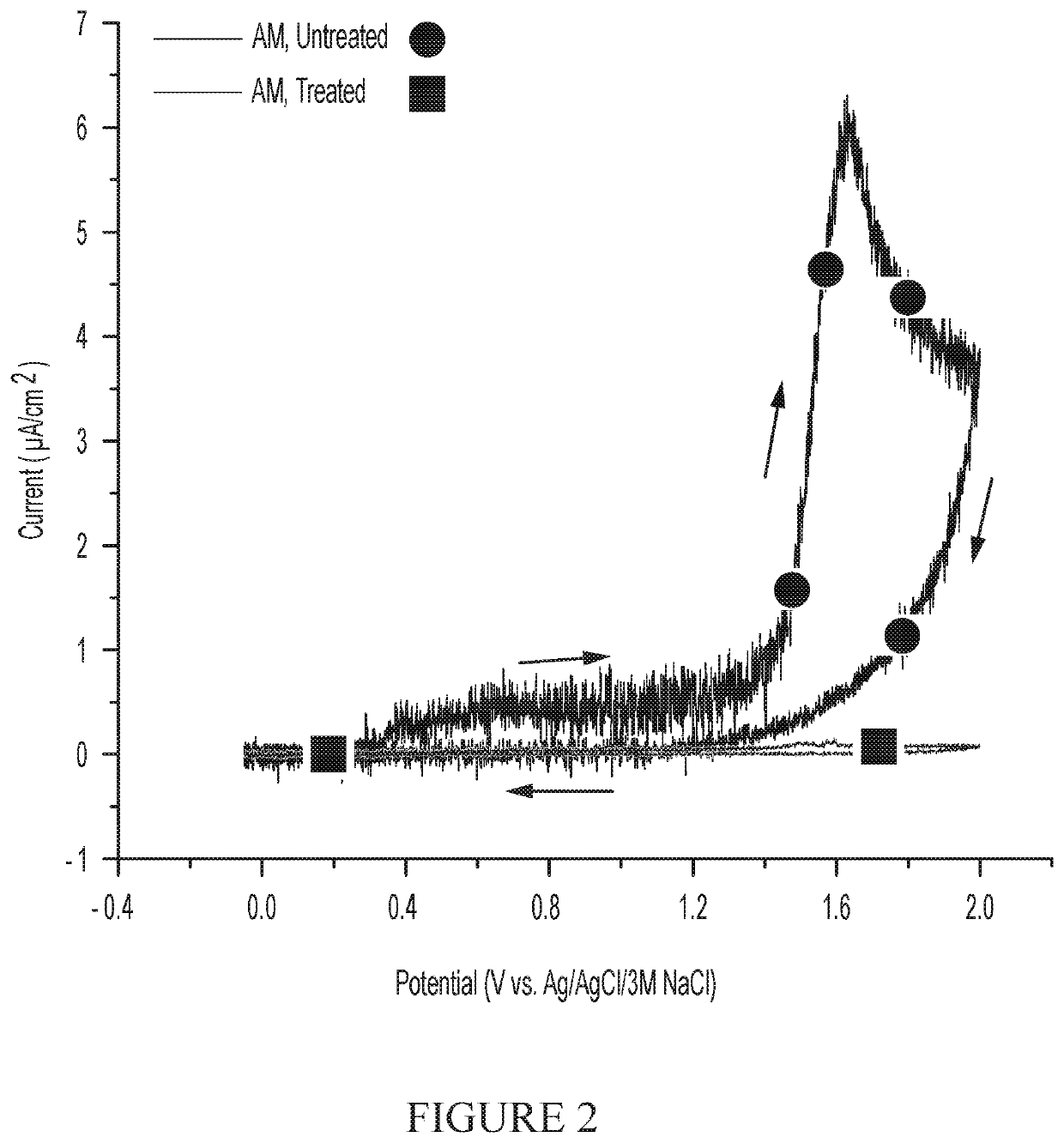Empowering additive manufacturing metals and alloys against localized three-dimensional corrosion
a technology of additive manufacturing and metals, applied in additive manufacturing, transportation and packaging, coatings, etc., can solve the problems of alloy corroding in the location of the corrosion, the deterioration of the fabricated through additive manufacturing processes, and the loss of effectiveness
- Summary
- Abstract
- Description
- Claims
- Application Information
AI Technical Summary
Benefits of technology
Problems solved by technology
Method used
Image
Examples
example 1
Protection Through Chemical Deposition
[0049]In this example, the effect of chemically-deposited surface coating on the corrosion of Ti-6Al-4V 3D AM alloy is illustrated. First, two 3D objects were fabricated through an AM process using Ti-6Al-4V powder as the feedstock. The feedstock of the first object was chemically-deposited surface coating using an aqueous solution containing cerium ions and nitrate ions while the feedstock for the second object (i.e., the control) was left uncoated. Both objects were then subjected to an accelerated corrosion test to determine the effect of the conversion coating on corrosion.
[0050]The long-held view that the surfaces of most alloys are covered with a corrosion-resistant oxide layer is recognized. Such oxide layers do exist on alloys of all shapes and sizes, including nanometer- and micrometer-size alloy particles. The oxide layer almost always exhibits strong resistance to corrosion in most locations, but weak resistance to corrosion in some l...
example 2
for the Incorporation of Cerium in the Surface Oxide Layer
[0054]Evidence of the incorporation of the corrosion inhibiting chemical getting incorporated in the surface oxide layer of the alloy particles used as the AM feedstock material is discussed below. In this example, the cerium nitrate chemically-deposited surface coating protocol on an AlSi10Mg alloy powder was performed. The treated powder was tested using Scanning Electron Microscope (SEM) for qualitative observation, and Energy-Dispersive X-Ray Spectroscopy (EDS) for quantitative estimation of the cerium in the alloy. For comparison purposes, an untreated AlSi10Mg alloy powder we also tested. FIG. 4A, for instance, is the SEM image of the uncoated / untreated AM feedstock material AlSi10Mg alloy powder, in which the spherical objects seen in the image are the particles of the uncoated / untreated alloy powder. FIG. 4B is the Scanning Electron Microscope (SEM) image of the chemically-deposited surface-coated AM feedstock materia...
example 3
g Pitting Corrosion in 316L AM Alloy
[0057]In this example, the impact of surface modification of a 316L AM alloy feedstock in accordance with certain embodiments of the invention is illustrated. Pitting corrosion is a localized form of corrosion and as little as 1% or less of the surface may experience such a form of corrosion, especially in 316L. However, the structure made of the 316L alloy could experience catastrophic failure due to pitting corrosion. It was hypothesized that the 316L alloy's surface is covered with chromium oxide that facilitates the prevention of the surface from corroding; however, this oxide is weak in some locations and is susceptible to corrosion.
[0058]In this example, a 316L AM alloy powder feedstock was treated with an admixture of cerium, vanadium, molybdenum anions and nitrate cations. It was hypothesized that treatment of the surface of the 316L AM alloy powder feedstock with an appropriate chemical agent (e.g., functionalizing agent) would reinforce ...
PUM
| Property | Measurement | Unit |
|---|---|---|
| average diameter | aaaaa | aaaaa |
| diameter | aaaaa | aaaaa |
| average diameter | aaaaa | aaaaa |
Abstract
Description
Claims
Application Information
 Login to View More
Login to View More - R&D
- Intellectual Property
- Life Sciences
- Materials
- Tech Scout
- Unparalleled Data Quality
- Higher Quality Content
- 60% Fewer Hallucinations
Browse by: Latest US Patents, China's latest patents, Technical Efficacy Thesaurus, Application Domain, Technology Topic, Popular Technical Reports.
© 2025 PatSnap. All rights reserved.Legal|Privacy policy|Modern Slavery Act Transparency Statement|Sitemap|About US| Contact US: help@patsnap.com



